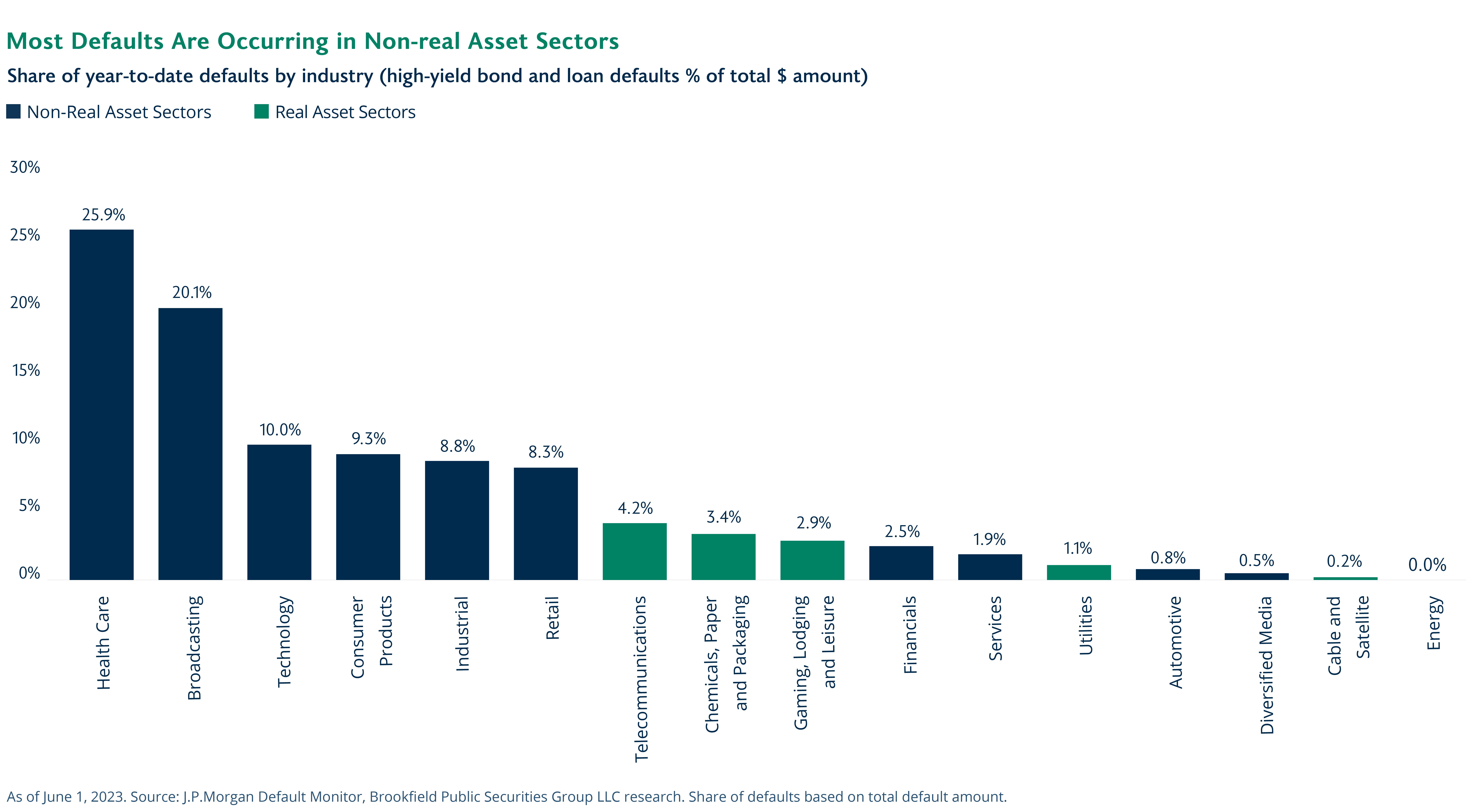Market
Memos from Howard Marks: Cockroaches in the Coal MineRead why we believe real asset high yield is a defensive option worth considering.
Defaults on high-yield bonds have been on the rise in recent months—and are forecast to continue to grow—as financial conditions tighten along with the fastest pace of Federal Reserve hikes in decades. However, we find most of these defaults have been in non-real asset sectors, with real asset high yield offering higher quality and a defensive option for credit portfolios.
U.S. high-yield bond and leveraged-loan default rates increased to new two-year highs in May, with further increases expected through 2024. The $42.7 billion of defaults and distressed exchanges this year through the end of May already equals 89% of 2022’s total and represents more than triple 2021’s 14-year low of $13.9 billion, which also showed 2023 is now on track for the third largest annual default total.
Yet real asset sectors represent just 11.9% of defaults and distressed exchanges year to date, based on our analysis of default data, even though they comprise approximately 46% of the high-yield market, as measured by the ICE BofA U.S. High Yield Index.
We observe the same trend historically and during periods of economic distress. According to our analysis, between 1970-2021, on a 10-year rolling average, the default rate among non-real asset sectors was 51% higher than in real asset sectors. Meanwhile, in past periods of economic distress, we found that non-real asset sectors defaulted 33% more than real asset sectors.

We attribute the lower defaults among real asset sectors to the higher quality of real asset high-yield. Higher-rated high yield debt (i.e., with a credit rating of B+ rated and above) is more prevalent in real asset sectors and has historically had meaningfully lower default rates compared with lower-quality debt.
We believe issuers in real asset sectors can maintain their lower default rates and have better recovery prospects over time due to their superior business quality and collateral. And despite its defensive nature and higher credit quality, real asset high yield offers attractive valuations and yields relative to non-real asset high yield. Against this backdrop, we believe real asset high yield offers an attractive defensive opportunity for credit investors.